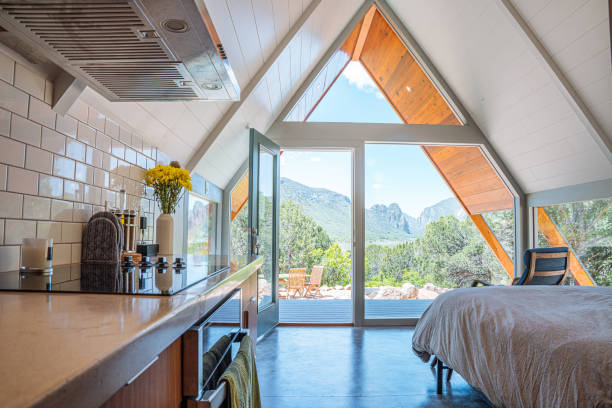Concrete construction offers many advantages to home, resort, or villa owners, including energy efficiency, durability, and low maintenance. A concrete building provides a safe, comfortable, and healthy environment while also benefiting the environment. Many of these advantages result in long-term financial savings for villa owners.

Benefits of Concrete building construction
Energy efficient
The high thermal mass of tightly sealed concrete walls, combined with insulation, eliminates drafting and results in an airtight, high-performance, energy-efficient home.
When compared to wood, concrete mass slows the movement of heat through a wall. As a result, a concrete villa will be warmer in the winter and cooler in the summer than a wood-framed house with equal insulation. Concrete also reduces air leakage when compared to wood-frame construction, which accounts for the majority of energy loss in your home or villa.
Low maintenance
Concrete construction produces low-maintenance homes with wall systems that retain their shape and integrity over time. A concrete wall’s exterior is more resistant to wind and heavy rains than a wood-frame wall. Stucco, brick, or a concrete texture product are common concrete wall facades; none of these products require painting. A solid and robust exterior concrete wall will not dent and thus resists hail and flying debris damage.
Earthquake resistance
Homes or villas built with steel-reinforced concrete walls provide the stiffness, strength, and ductility to withstand the destructive forces of earthquakes. Reinforced concrete walls withstand earthquake compression and tensile forces.
Healthy
Concrete structures provide healthier environments by containing fewer airborne allergens, molds, and toxins than most wood-frame structures. A concrete wall system prevents outside allergens from infiltrating the house or your villa. Concrete is more resistant to mold and mildew than wood. Mold can cause headaches, severe respiratory infections, and immune system dysfunction. Concrete has lower volatile organic compound (VOC) emissions than wood. VOCs can cause irritation to the throat, eyes, and nose. VOCs can also cause nausea, headaches, and kidney, liver, and central nervous system damage.
Design Versatility
Concrete provides architects with a great deal of design freedom. Concrete’s free-flowing nature allows architects to incorporate more unique shapes and custom features into their home designs than wood or steel houses do.
Additionally, during the construction process, builders can easily adjust the concrete walls for a home without delaying production.
Because the manufacturer can produce exact amounts of concrete for a project, environmentally friendly concrete house construction generates minimal waste. Builders can also break down recyclable concrete into rubble and reuse it for other construction projects.
Concrete construction has several other environmental advantages:
- Heats and cools with less energy.
- Materials are obtained and manufactured locally, reducing transportation energy.
- The service life lengthens the time between reconstruction, repair, and maintenance, and thus the environmental impacts.
- Absorbs CO2 over its lifetime, reducing its carbon footprint.
- Concrete production consumes significantly less energy than steel (1.8 percent) and wood production (0.5 percent)
Long-Term Economic Benefits
While concrete villas are more expensive to build than wood-frame, they save money in the long run due to lower utility and maintenance costs. Concrete building are extremely resistant to fires, severe weather, and break-ins. As a result, homeowners with concrete homes may be able to obtain lower home insurance rates than those with wood-frame homes. The design frequently allows for smaller-capacity equipment for heating, ventilating, and air-conditioning, resulting in additional savings for homeowners. Concrete homes frequently outperform their wood-framed counterparts in terms of resale value.